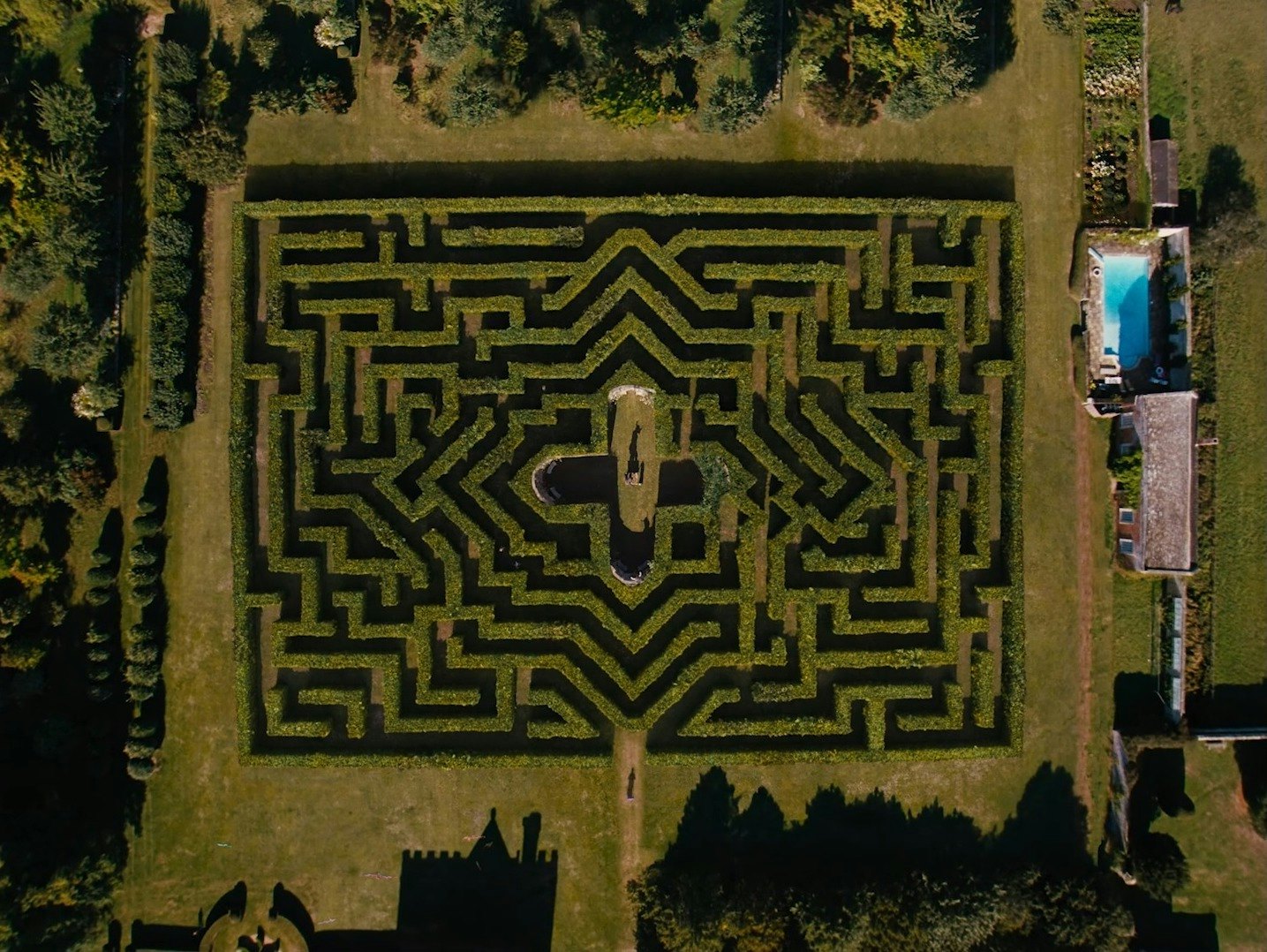
Saltburn isn’t exactly a nuanced story. Emerald Fennell’s take on a Talented Mr. Ripley story follows young Oxford student Oliver (Barry Keoghan) as he worms his way into the hearts and lives of an upper-class family over a summer at their sprawling country estate. The film’s entire third act is a cavalcade of bad decisions, showing how unredeemable every character involved truly is.
But underneath the takedown on social climbing and class warfare, there’s an entire world of symbolism that is quite literally hiding in plain sight. And once you see it, it’ll change how you see the movie entirely.
Warning! Spoilers for Saltburn ahead.
One of the most haunting images around the Saltburn estate is the hedge maze. Oliver first encounters it through a model he finds while exploring the house, with little marbles to represent wanderers in the maze. It’s a representation of how frivolous the Catton family truly are: they built their own maze for fun, while Oliver is busy trying to navigate his own social labyrinths.
It all builds to Oliver’s birthday party, which Elspeth decides will be A Midsummer Night’s Dream themed. It’s there where Oliver confronts and frames Farleigh for theft, before murdering Felix to keep his lies from being discovered. Felix’s body is found in the center of the labyrinth, under a statue of the minotaur from Ancient Greek myth.
The meaning of the minotaur

With that single bit of symbolism, so much of Oliver’s character suddenly makes sense. It seems like Oliver is initially meant to represent this monstrous threat —the minotaur figure — but in the end, he manages to make himself the hero of the situation. “He’s the prey that becomes predator,” Fennell told GQ.
Wearing deer antlers befitting the Midsummer Night’s Dream theme of the party, Oliver begins the night seemingly vulnerable and outcast. But by the time the film ends, it’s revealed that he orchestrated his whole visit to Saltburn, so that he can inherit the estate. It’s a story that draws inspiration from a classic Greek myth. In the myth of the minotaur, the young warrior Theseus ventures into a labyrinth to confront the minotaur, the half-bull, half-man monster who terrorizes the Cretan royal family. Theseus slays the minotaur in the labyrinth, only to manipulate the royal family he offered to help and win the crown for himself.
In Saltburn, it’s easy to read Oliver as the monster of the movie, but in reality, Oliver is Theseus and Felix is the minotaur he slays. The minotaur, in Greek myth, demanded child sacrifices — in Saltburn, Felix constantly brings a slew of lower-class friends to Saltburn to entertain him, each as replaceable as the last. Until Oliver.
How Saltburn integrated the minotaur into the movie

This representation may seem like a stretch, but it’s something Fennell considered in production, describing how production designer Suzie Davies evoked Oliver in the statue itself. “Suzie built the minotaur in the centre of the maze, and built the maze too,” she said, “But it’s modelled on Barry’s posture. Or Oliver’s posture. The body is Oliver. So whenever I needed him to switch to real Oliver, I’d say, ‘Barry, minotaur!’”
The minotaur has another big connection in Saltburn. A Midsummer Night’s Dream begins with the mythical wedding of Theseus, the slayer of the minotaur, to Amazonian queen Hippolyta. Meanwhile, Fairy King Oberon and Queen Titania argue over the possession of a “changeling boy,” a hostage they both find entertaining. It’s this spat that leads to all the love-spell high jinks of the play that would eventually inspire Oliver’s birthday party. Fennell also ties Oliver’s character to this part of the Shakespearean plot by having him wear the deer antlers in the party. “He’s the deer, he’s the changeling boy who’s the centre of all of it,” she said.
Saltburn may not have had the most nuanced class satire, but in tying these classic tales to Oliver’s plight, it’s easier to see him take what should have been his story of being the rich’s plaything and twist it into his own narrative of being a mythical hero who inherits everything. He may have been modeled on the minotaur, but he emerges as Theseus, king of Crete, lord of the Manor of Saltburn.




!["[T]he First and Fifth Amendments Require ICE to Provide Information About the Whereabouts of a Detained Person"](https://images.inkl.com/s3/publisher/cover/212/reason-cover.png?w=600)


